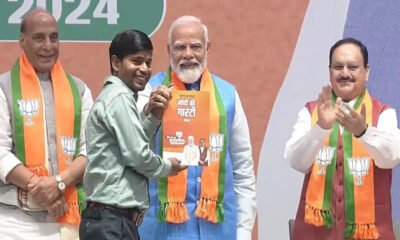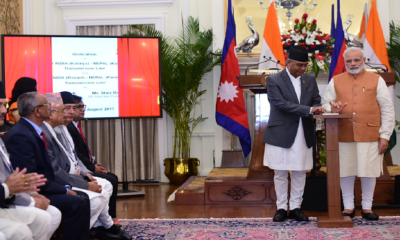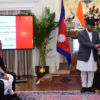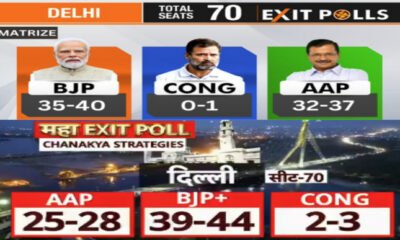Business
How feasible is the Cashless Economy In India?
Ayushi Sharma.
On November 8th 2016, PM Narendra Modi scrapped Rs. 500 and Rs. 1000 denomination notes. The street vendors were affected by this the most. According to the Ministry of Housing and Urban Poverty Alleviation, there are around 10 million street vendors in India, which makes up to 14% of the total (non-agricultural) urban informal employment. These street vendors are mostly rural migrants who come to cities looking for employment opportunities and include fruit and vegetable vendors, hawkers etc.
During demonetization, India was facing a cash crunch and also these vendors were heavily dependent on cash transactions and many people had no cash on them or had higher denomination notes, for which street vendors had no change. Naturally, it hit them exceptionally hard. PM Modi promoted ‘Digital India’ but a sober analysis reveals that digital India moves were grossly unfair in a context where street vendors were struggling to earn a decent livelihood on streets.
Also, I would like to share my personal experience during the demonetization. NSS from Miranda House took initiative to aware street vendors about the e-payment through SBI buddy app. They were not literate enough., but were willing to adapt to new technology, their main concern was security only.
Digital payments become an important part of every economy. In China, street vendors and huge shopping centres rely on apps like Alipay and WeChat and even beggars and street musicians use QR codes in big cities. Digital payments in China are a part of the “Green Finance ” project because they are more efficient as it cuts costs by up to 75%.
In the UK, ‘The Big Issue’ magazine is helping homeless and other vulnerable people start their micro-enterprises and equipping its vendors with payment card readers across the UK. Selling the magazine is a way for people to pull themselves out of poverty. In Mexico, CoDi (Cobro Digital) app was launched on September 30, 2019, to scan barcodes to pay for purchases and transfer funds between banks. One aim of this app is to provide a convenient, easy to use payment method for shoppers.
Here is the list of new MHA guidelines for Lockdown 2.0
It is estimated that only 2% of about a million small, traditional businesses in Mexico such as butcher shops, stationary stores, and small shops currently accept methods of payment other than cash. At least in Mexico’s large and medium-sized cities, where mobile internet service is generally reliable, giving the option of paying via CoDi is essential because they will miss out on sales if they don’t.
In all these countries, digital modes of transactions were adopted due to various reasons and some sort of planning is done and the common objective of all these countries is to build a cashless economy by inculcating a more convenient and hassle-free payment system. In India, it was implemented in a haphazard manner, but it can be used to grow our economy as people are now shifting toward digital payments.
So, the challenge remains on educating the street vendors about digital payments so that their employment opportunities improve, only then the economy as a whole will flourish and it also requires implementation of a policy that strengthens the internet security and protects them against online fraud and cyber fraud.

























